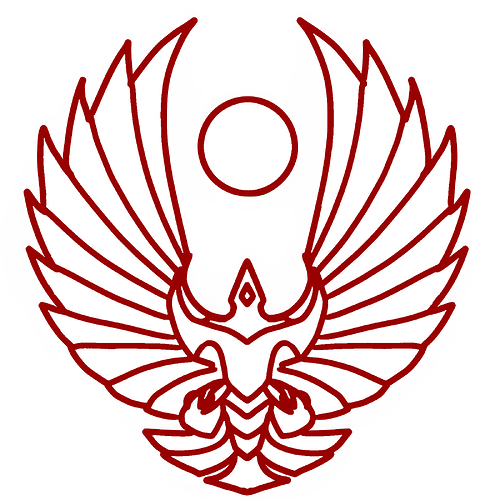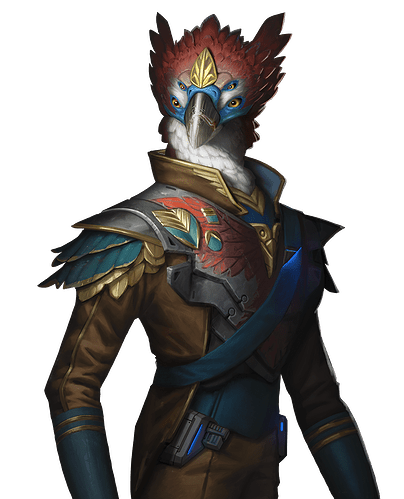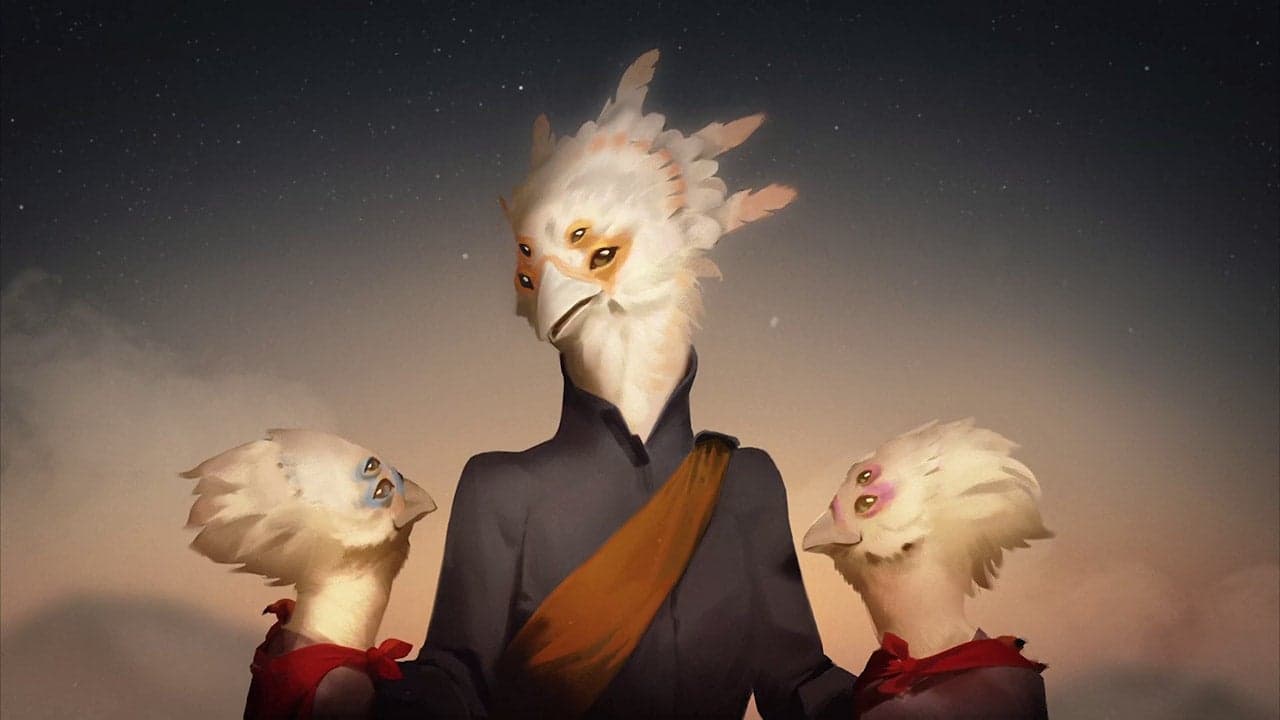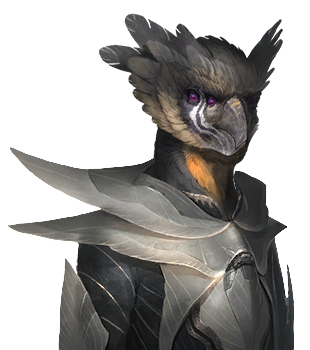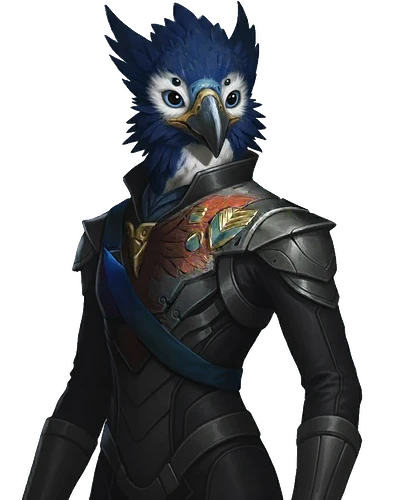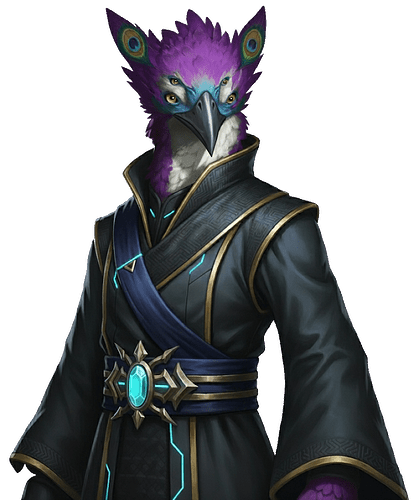Alone and without equal in the depthless dark, the Osprian Timarchy stands alone, shrouded in mysteries and rituals enigmatic to outsiders. Few have lived to hear stories about this honourbound realm and fewer still have seen Osprians first hand. What little is known about them gives birth to myths written across unexplored stars. Yet within their domain, a culture unlike any other thrives with stories unheard and unsung in the wider galaxy.
Nine Springs of Honour
The cornerstone of Osprian cultures is its elaborate honour code. Originally written by the first Timarch, Kaelrix I, to unify the Osprians under one rule, the Nine Springs have become the very language that shapes the Timarchy. Through an elaborate gentrification ceremony, honourhood is granted by the Supreme Honour Tribunal to individuals of exceptional quality according to the Nine Springs. Easily recognisable by the suffix -thar, these individuals not only serve as leaders in Osprian society, but living examples with a reputation to match even the brightest of stars. Of such quality are these individuals deemed that their entire bloodline inherits their honourhood with all the accompanying expectations to live up to the legacy of their first gentrified forebear.
In essence, the Nine Springs are:
- Loyalty: To remain loyal to one’s community and its Gentry if they follow the Code of Honour. Thus, domestic aggressors towards fellow Osprians should not be followed, as the ultimate community is that of the Osprian species.
- Courage: To take initiative within one’s field and pursuing a general form of guardianship of one’s community. This also extends to those who tarnish the honour code with malicious content and those disrespectful of fellow Osprians, as one should stand up to them as part of personal and collective integrity.
- Justice: To uphold the laws and customs of a community while respecting those of other communities when visiting.
- Benevolence: To uphold kindness to one’s community through empathy.
- Dignity: To respect for all dignified Osprians (those following the Code of Honour), including oneself. The actions of one single individual contribute to the overall dignity of the wider Osprian species. Those who denigrate other Osprians with malicious intent or harm others don’t deserve the same social reverence as the dignified and should be kept at a distance by all or rehabilitated. If they pose violent harm to fellow Osprians, they should be brought to justice, as prescribed by codified laws.
- Dedication: To pursue one’s path/specialisation through rigorous self-discipline and excelling at it. This doesn’t necessarily have to be martial.
- Integrity: To live up to the Code of Honour and one’s own morals, no matter the circumstances.
- Reputation: To maintain and improve the reputation of one’s family and clan. Should one bring unbearable shame, one may choose to repent for it and this varies depending on the Osprian cultures.
- Deference: To accept one’s role within society. Not only in civic matters, but also within a company or even family that typically ascribes to a specific gender.
Aristocracy
In a system where a noble house can just as easily rise as fall, only honourable decorum ensures one’s legacy across the stars. Nobility for the Osprians is primarily characterised through Honourhood, ensuring the meritocratic nature of its aristocracy. As such, all members of the nobility are part of the Gentry, but not all members of the Gentry are nobles. However, unlike any other civilisation, Osprian aristocracy is also one deeply rooted with democracy as rulers and representatives are elected through plebiscites. Dynasties are not appointed, but elected and only the most honourable may serve at behest of the people.
Upon one’s election to become a rulers, they are invested as formal nobility with their own estate. These vary from small communities to entire city-planets, but all maintain the same honourable decorum expected of their station.
In total there are 10 formal non-royal noble ranks:
- Timarch or Timarchess, the title of the ruling monarch of the Osprian Timarchy.
- Prince or Princess, a title inferred to all heirs of the Skavirian Dynasty.
- Duke Celestine or Duchess Celestine, the senior-most aristocrats in charge of ruling entire interstellar domains.
- Duke Palatine or Duchess Palatine, the senior planetary nobility overseeing one or multiple planets.
- Duke or Duchess, planetary nobility that typically rules over an entire continent or moon.
- Earl or Earline, heads of smaller planetary states.
- Count Palatine or Countess Palatine, planetary nobility living in the provincial palaces from where they govern the planetary provinces.
- Count or Countess, junior nobles tasked with administering planetary subdivisions.
- Viscount or Viscountess, junior nobles tasked with administering small planetary subdivisions.
- Baron or Baroness, the lowest nobility rank with actual political power as the administer the smallest governable subdivisions in the Timarchy.
- Lord or Lady, the lowest rank of nobility, granted with a simple estate.
